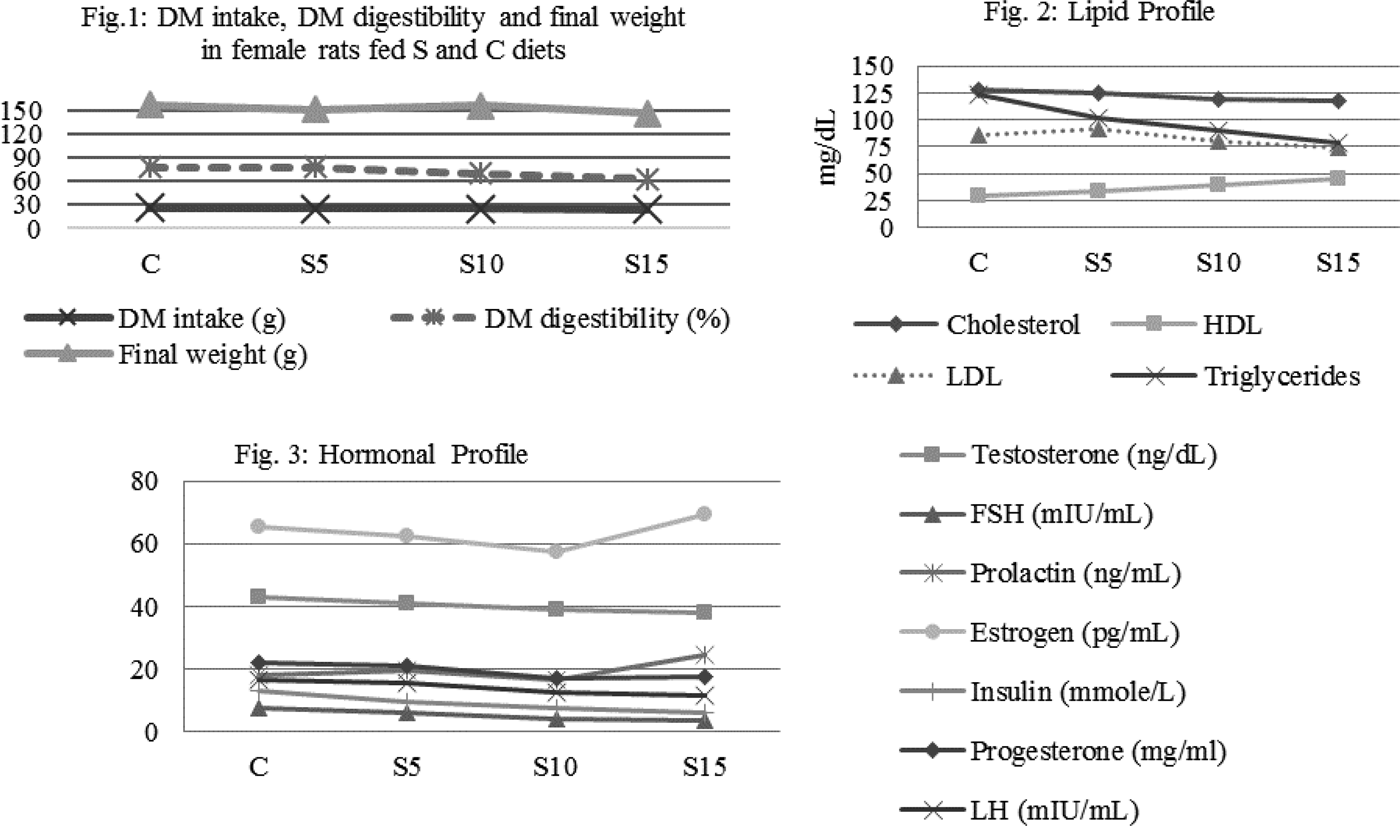Soy isoflavones (S) are the phytoestrogens used as estrogenic replacement (ER) therapy by weaker ER-binding to regulate the reproductive hormones(Reference Ososki and Edward1). The objective of this study was to examine the effect of various levels of S on dry matter (DM) intake, DM digestibly, body weight (BW), lipid profile, insulin and reproductive hormones of healthy young female rats model.
Thirty-Six Wistar 45 days old rats weighing 95 ± 5g were divided into 4 groups, each having 9 rats: C (control: without S), S5 (S 0.05g/Kg BW), S10 (S 0.10g/Kg BW) and S15 (S 0.15g/Kg BW). Soy isoflavones were given through the oral gavage(Reference Turner2). Food and water were offered ad libitum and intake was recorded daily. Body weight was recorded on weekly basis. During last week of trial, collected feces by total collection method(Reference Nisa3) and blood samples were used to calculate nutrient digestibility and biochemical analysis respectively. The Completely Randomized Design and LSD test were used to analyze the data(Reference Steel4).
Significant decreased (P < 0.05) dry matter intake was observed in rats fed S5, S10 and S15 diets to that of C group (Fig. 1). DM digestibility was significantly (P < 0.05) increased in rats fed S5 and C diets. Crude protein, fiber and ether extract intake and digestibility showed similar trend as in DM (data not shown). Non-significant (P > 0.05) change in final BW was noticed in all rats treated with S diets. Fig. 2 shows that cholesterol, triglyceride and low-density lipoprotein (LDL) was lowest in rats fed with S15 diet, whilst high density lipoproteins (HDL) highest increase was observed in rats fed same diet. In rats fed S15, an increase in serum prolactin and estrogen level as well as decrease in follicle stimulating hormone (FSH), progesterone and insulin was noticed (Fig.3; P < 0.05). Non-significant (P > 0.05) change was observed in testosterone and luteinizing hormone (LH).

In conclusion, S15 diet was found to be effective to synchronize the reproductive hormones in female healthy rats. However long-term administration of this level may cause toxicity. So, long term study with S in healthy young female rats is required for future investigations.


